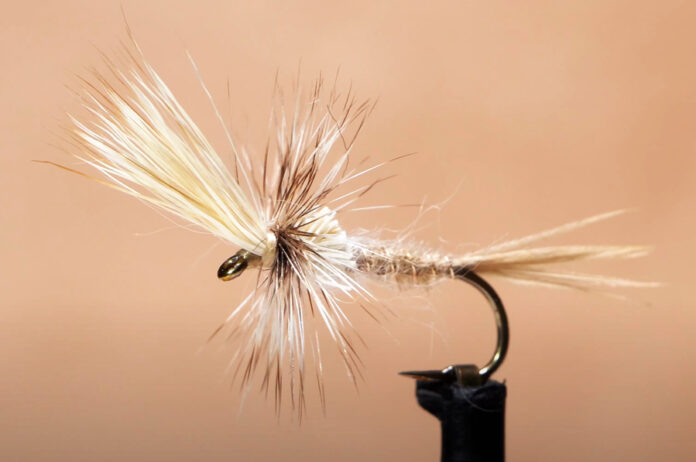California fly-tying legend Bob Quigley (1950-2012) was an early proponent of tying patterns to imitate specific moments in an insect’s life, rather than just focusing on the main stages of nymph, dun, and spinner. Fishing on Fall River in 1978, he noticed that the trout were ignoring the majority of the mayfly duns on the water, choosing instead to eat the cripples, which presented a much easier target. His Quigley Cripples series presented a realistic image of a mayfly that had not hatched properly and is struggling in the surface film.
In this great video from Tightline Productions, Tim Flagler walks you through the steps to create a Light Cahill version of the Quigley Cripple, but it’s easy to see how changing the colors of the materials will allow you to imitate almost any mayfly using this pattern. Along the way, Tim demonstrates a few tips that will make you a better tier, such as how to counter-wrap a fragile feather fiber, how to reverse direction of your thread to secure the wire, and how to prepare the tie-in point on a hackle feather.
Light Cahill Quigley Cripple
Hook: Wide-gap dry-fly hook (here, a Lightning Strike DF1), size 14.
Thread: Tan, 6/0 or 70-denier.
Rib: Gold Ultra Wire, extra small.
Tail/Abdomen: Bleached pheasant-tail fibers.
Thorax: Light Cahill beaver dubbing.
Wing: Short, fine, bleached deer hair, stacked.
Hackle: Cream or ginger grizzly hackle.
Head: Tying thread.
Adhesive: Head cement (here, Sally Hansen Hard-as-Nails).
Tools: Hackle pliers, whip-finish tool.
Credit: Source link






























